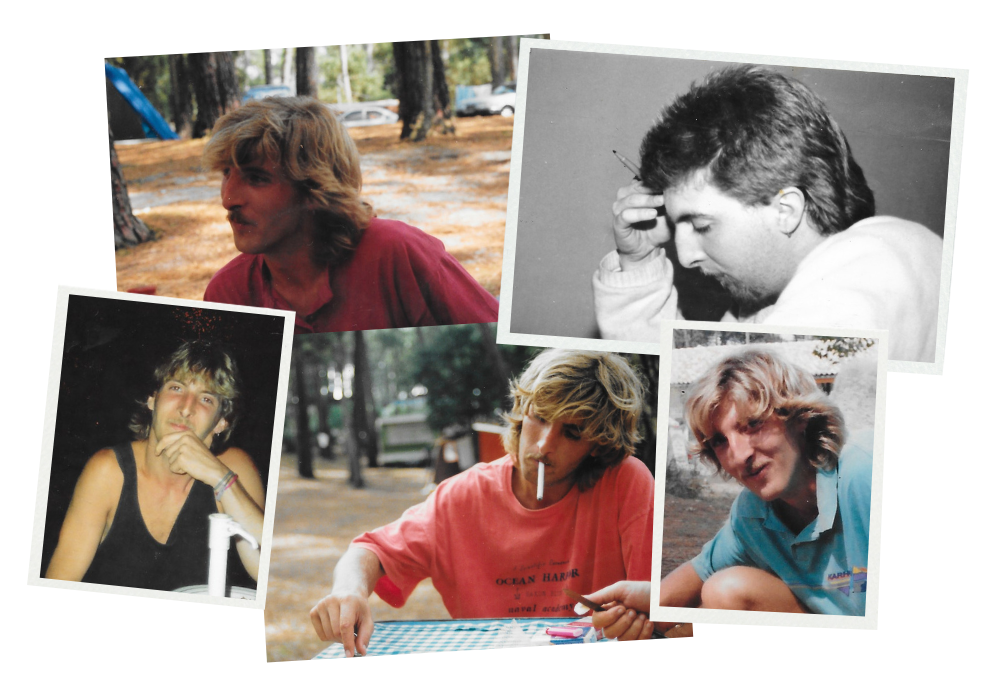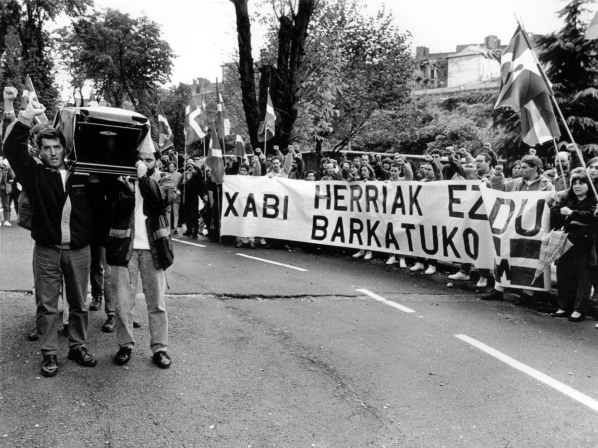
- Today 30 years the Zumaian militant Xabier Kalparsoro Golmaio died in the hands of the Spanish Police. With the opening of the website Anuk.eus will be held today, September 26. According to Hegiak, the driving association of the initiative, the years are behind Anuk's dark death.

The newly created Zumaia Hegiak Memory Association anuk.eus has opened the website to help resolve the case of Xabier Kalparsoro, who died in custody of the Spanish Police.
After 30 years, they have received on the web explanations about some facts and data that have not yet been clarified with Anuk's arrest and death: Durango's arrest and circumstances, Ertzaintza's arrest a month earlier and others. The website has been created in Basque, Spanish, French and Catalan, where personal photographs, stories, newspaper archives, videos and photographs of the time, audios, bibliographic recommendations of Kalparsoro have been collected. The goal is "to leave Xabier Kalparsoro, in the absence of the official truth, in the hands of the citizens what happened", as Hegiak pointed out.
The members of the association emphasize that one of the values of the project is voluntary work. The work of documentation, the design and development of the web, the translations, the collection of photographs... have been made possible thanks to the contributions of the citizens.
Public act
As of today, 26 September, together with the Egia Zor Foundation, an event will be held to call for clarification of the death of Kalparsoro. It will be at 19:00 in the Moilaberri area of Zumaia (in case of rain in the Aita Mari room).
A documentary on the case was created in Zumaia about 15 years ago: The Truth of Anuk. Visible on the ARGIA multimedia channel.

30 years waiting for the truth
As a young man, Xabier Kalparsoro adhered to Zumaia’s multiple struggles from his high school student stage. In the youth organization Jarraitu had political responsibilities at the level of Gipuzkoa and was freed for many years. At 17, he was first arrested by the Civil Guard. At 25, with an act of sabotage, he fled to Ipar Euskal Herria with the police behind him. There he became a member of ETA.
As of May 1993, Hego Euskal Herria
spent that summer in a bar in Vitoria with a former colleague from Jarra. In his conversation with him he told him that he had just come out of a long detention. This friend told the police the situation in Kalparsoro with the following words: “The face was completely deformed and the hands on the living skin. He said he was arrested by the Ertzaintza. They did everything, they drugged him and then they left him free.” The next day he ate with him on the floor of other friends. Asked about his bitterness in his arms and legs, he picked up a napkin and wrote: “I have spent many hours between brawls, I don’t want to talk about that.” Then he took the lighter and gave the napkin fire. Hours later it became known that the Ertzaintza arrested a refugee in Llodio called Anu. Although newspapers published it, all police officers denied it. The next day, Chato called the Sansomendi Civil Guard headquarters saying who he was. Nobody believed him there.
Llodio, Durango, Indautxu and Basurto On
July 13 the discovery of an ETA hole in the foothills of Laudio was inaugurated. On the last day of this month, the Spanish Police appeared at home looking for Calparsoro. They didn't find it.
On 23 September, the Durango municipal police contacted the Zumaia agents and, thanks to the latter, the Kalparsoro family discovered that Xabier was detained on charges of theft. They gave him contradictory data like he didn’t want to talk to his family “in drunkenness, because he was like he had left his head.” The family approached Durango and told them that by court order they took her to Indautxu in Bilbao. As he approached Indautxu, he was told that he was taken to the hospital in Basurto at the request of Xabier. There he was in the hospital, but they couldn't see him. In fact, for 2 days in a coma until his death, they prevented family visits, in the name of the incommunicado situation established by the police. When Xabier was there, she found out thanks to a nurse.

The official version of
the police exposure to Kalparsoro's death to date is simple and curious: When he was detained in the 2nd floor room of the Indautxu police station, he threw himself on the ground of the police he was with and jumped out the window. He died of a fall. As in most cases where a dirty war or torture has been suspected, many facts challenge the official version.

Some data indicates that what happened was very different – Husband was. After death, the brands of wives were evident.
– They applied all the measures of the strict anti-terrorism law. Skipping through the window is very difficult.
– A doctor from Basurto told his family that he had many signs of torture.
– The coroner who performed the autopsy wrote that it was impossible for Kalparsoro's death to be the result of a jump. The body was too close to the wall, so the fall was irimpulsive
– According to a nurse from Basurto, she screamed “don’t stick me anymore” at a time when she recovered in the hospital.
– On 7 October the newspaper Egin published Kalparsoro’s letters to ETA’s management. In that text, Kalparsoro explained that from 30 August the police were arrested, taken to the mountain and kidnapped for several days in Llodio. There was talk of a police drug causing total head loss. After those days she left her free and wrote that the Ertzaintza persecuted her.
– Several neighbours in the Llodio area showed police presence in the valley mountains on the same days as Kalparsoro claimed to have been kidnapped in the letter.
A lawyer from Durango told Kalparsoro's mother that ertzainas, civil guards, Spanish police, military and members of the secret services appeared from the police station of the Durango Municipal Police. As an ordinary member of ETA, according to the police, he carried out recruitment tasks, in any case disproportionate movements.
The Anti-Torture Group,
the City Council of Zumaia and the Kalparsoro family filed complaints from the Bilbao Examining Court, María Soledad Alejandre Demenech. The only judicial route he has left so far was in 1995. The Audience of Bizkaia condemned two civil guards at Indautxu for not preventing Calparsoro from jumping out the window. The penalty was a six-month prison that no one had served to date. Because the Supreme Court reduced the sentence to a mere foul.